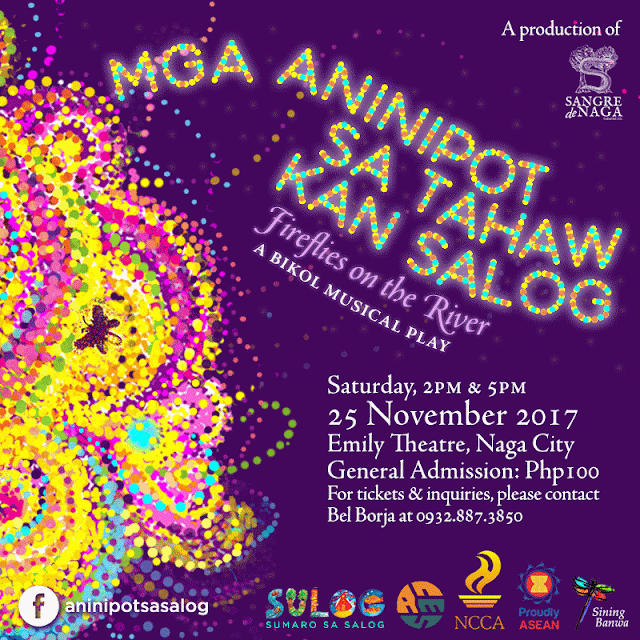Pagluwás

Dinádara kitá pasíring dumán kan pulá
o bérdeng karátula—daí nanggád malumlóm,
pirmíng maliwánag—garó bagá náenot
nang itinaláan na manínigô kitáng alingón
bágo an pagluwás. Kun daíng karátula,
igwá satóng magíya: an magayón na darága,
an maórag na laláki, na sarô saná man
pámpaogmá bágo an búhay sa luwás.
Pusúan an pagluwás kun an pintóan gíbo sa salmíng—
nahíhiling pa an laóg minsán kitá nakaluwás na.
Alágad kun an pintóan gíbo sa káhoy o bákal
o kun anó pa man na bakóng silág, magián
an pagluwás húli ta daí nang sásalingóyon na laóg.
Kadákol an mináluwas sa tag-inít, kadikít man
sa tag-lipót, húli ta oróg na marháy na halì
sa lípot pasíring sa ínit an pagluwás.
Daí na mahídaw nin kógos, daí na mahánap
kan dáting kaibáhan na nása laóg pa.
Exit
We are commonly led into it by a red
or green signage—never dull-colored,
always vibrant—as if by a precondition
that we should be entertained first
before going out. If without signage,
somebody shall surely usher us: a pretty girl
or a handsome man, who comes nothing
more than a consolation before the life outside.
Coming out through a glass door is a bold act—
we still clearly see what’s inside from the outside.
Coming out is easier if it’s through a wooden or iron
door or if the gate is not see-through
so that there’s no more reason to look back.
Many comes out in summer, a few does
when weather is cold, because it is better
for the coming out if done from cold to warmth.
There will be no more yearning for embraces, no more
searching for the old companion still inside.
o bérdeng karátula—daí nanggád malumlóm,
pirmíng maliwánag—garó bagá náenot
nang itinaláan na manínigô kitáng alingón
bágo an pagluwás. Kun daíng karátula,
igwá satóng magíya: an magayón na darága,
an maórag na laláki, na sarô saná man
pámpaogmá bágo an búhay sa luwás.
Pusúan an pagluwás kun an pintóan gíbo sa salmíng—
nahíhiling pa an laóg minsán kitá nakaluwás na.
Alágad kun an pintóan gíbo sa káhoy o bákal
o kun anó pa man na bakóng silág, magián
an pagluwás húli ta daí nang sásalingóyon na laóg.
Kadákol an mináluwas sa tag-inít, kadikít man
sa tag-lipót, húli ta oróg na marháy na halì
sa lípot pasíring sa ínit an pagluwás.
Daí na mahídaw nin kógos, daí na mahánap
kan dáting kaibáhan na nása laóg pa.
Exit
We are commonly led into it by a red
or green signage—never dull-colored,
always vibrant—as if by a precondition
that we should be entertained first
before going out. If without signage,
somebody shall surely usher us: a pretty girl
or a handsome man, who comes nothing
more than a consolation before the life outside.
Coming out through a glass door is a bold act—
we still clearly see what’s inside from the outside.
Coming out is easier if it’s through a wooden or iron
door or if the gate is not see-through
so that there’s no more reason to look back.
Many comes out in summer, a few does
when weather is cold, because it is better
for the coming out if done from cold to warmth.
There will be no more yearning for embraces, no more
searching for the old companion still inside.


Comments